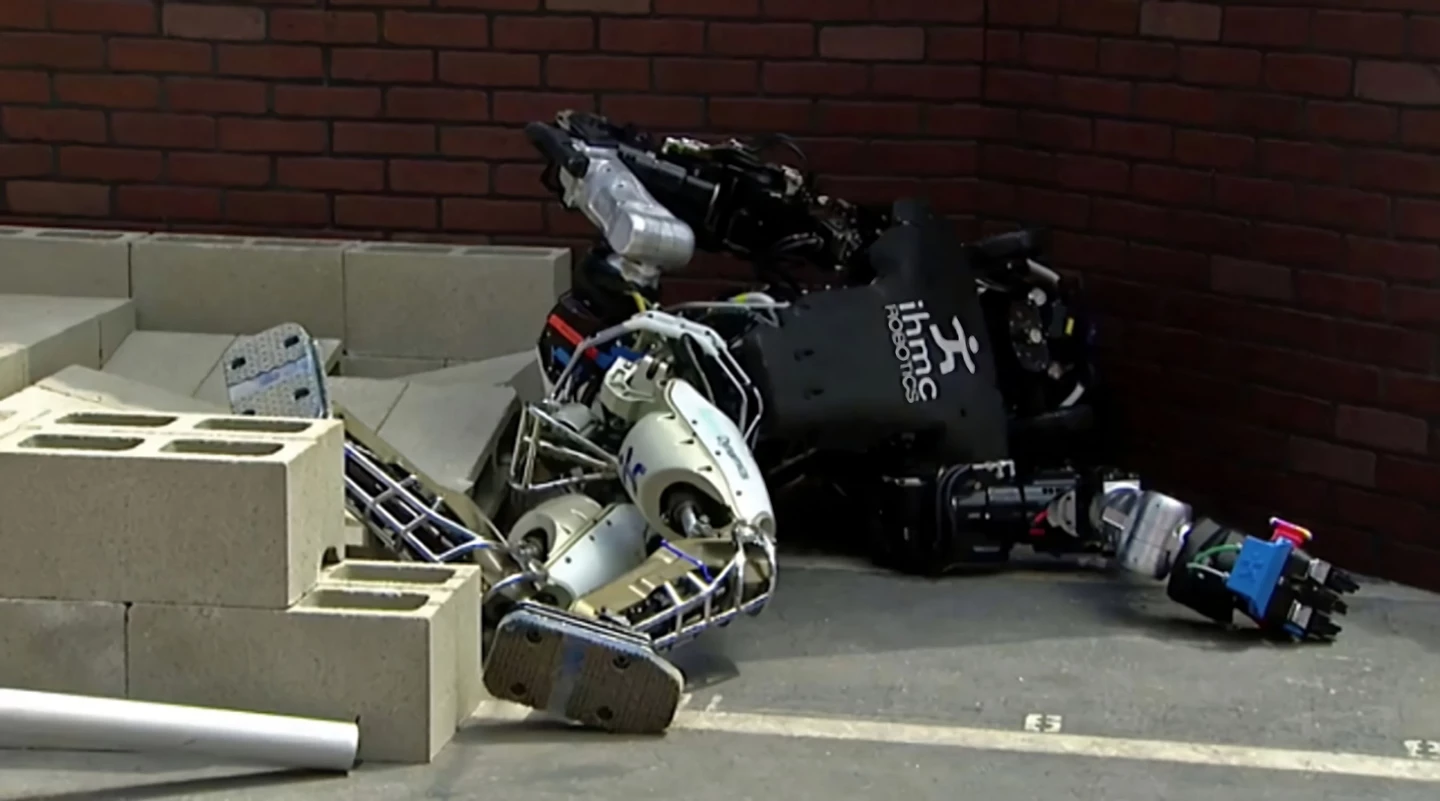The fastest any human has ever run on record was Usain Bolt. He was clocked at a ridiculously quick 27.79 mph (44.72 km/h) when he ran a 9.58-second 100-meter dash. Two-legged robots can run even faster, and it looks really weird.
What sent me down this rabbit hole was stumbling on a 10-year-old video of a robot designed after a Velociraptor dinosaur by the Korea Advanced Institute of Science and Technology (KAIST). Basically the Korean version of the Massachusetts Institute of Technology (MIT).
The aptly named KAIST Raptor robot weighs 6.6 lb (3 kg) and sprints at an insane 28.5 mph (46 km/h). It has a "tail" to aid its balance while it runs at full tilt, even while obstacles are thrown in its path. Sadly, its "tail" looks nothing like a 'raptor tail. It's actually just a pole mounted to the side that works as a counterweight to keep it upright.
Given the tether, we can't quite tell if it's self-balancing as the researchers claim, so it almost feels like a bit of a cheat on the top speed. Could it run that quickly and stay upright without the crane-like tether?
The only robot to have run nearly as fast as the Raptor is Boston Dynamics' Cheetah at 28.3 mph (45.5 km/h) ... but the Cheetah is a 4-legged sprinter – also tethered – so "it doesn't count" in this article. But it's still kind of cool. For reference, an actual cheetah can run up to 70 mph (113 km/h).
In May of 2022, Cassie the robot set a world record in the 100-meter dash with a very un-Usain time of 24.73 seconds. Also very much NOT tethered. While there's no official recorded top speed of Cassie, the 100-meter time breaks down to an average speed of 9.06 mph (14.58 km/h). It wasn't set without a couple of hiccups as it bit the dust more than once, looking very much like a fledgling bird finding its legs.
Of course, that record was also beaten in December of 2023 by another four-legged robot from KAIST – the same place that developed the Raptor – called Hound, when it ran the 100-meter dash in 19.87 seconds, averaging 11.26 mph (18.12 km/h). It clocked a treadmill top speed of 14.54 mph (23.4 km/h). But again, that doesn't count for this article – though it had some pretty epic crashes worth a watch towards the end of the video.
The Achires running robot from Ishikawa Group Laboratory takes a pretty interesting approach and is quite comical to watch. It has a forward-leaning posture – very much how a human runs. The whole thing reminds me of Pitfall Harry at full boogie. It might be the most satisfying bipedal running robot to watch to date.
The Planar Elliptical Runner is "self-balancing" without computers and only one motor driving the entire machine, however in the few videos we've seen, it certainly has the help of plexiglass walls that keep it upright. Is it a robot by that point? Or is it just a running machine? Regardless, it's still pretty ingenious.
In the last 2-3 years of robotics, it seems as though most research has been in introducing AI tech to robotics and/or making general-purpose and dynamic robots, like the Unitree G1 or Boston Dynamics Atlas, rather than simply blisteringly fast two-legged robots.
Indeed, watching the Atlas run a parkour course and finishing it off with a double backflip is far, far more impressive than watching a pair of legs run on a treadmill at nearly 30 mph (48 km/h), but there's still something to be said about flat-out top speed.
The Unitree H1, very much a general purpose machine, recently set the record for the fastest humanoid robot – which is bipedal, technically – at a paltry 7.4 mph (11.9 km/h). How long before Sonny the NS-5 (from the movie I, Robot) is sprinting down the street at 30-40 mph (48-64 km/h), helping detectives solve mysteries?

Lastly, enjoy a compilation of slow-moving two-legged robots falling down during a DARPA competition back in 2015, if for no other reason that to see how far robotics have come in the last decade. KAIST won that one, by the way. And don't worry, no [robo]one was seriously injured.






